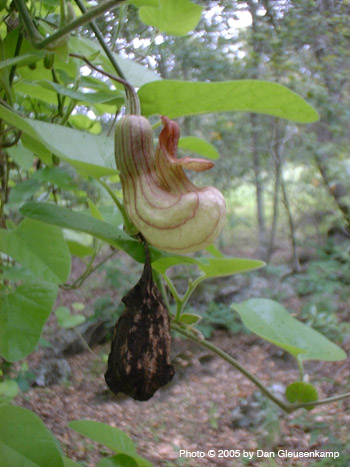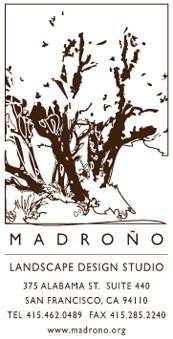 The well-groomed greenery of San Francisco's Golden Gate Park demonstrates the power of mankind to transform an uncultivated landscape into a recreational playground. Once a windswept wildland, these former sand dunes and occasional oak groves were staked out in the late 19th century by massive plantings of eucalyptus and monterey pine, thereby stabilizing the sandbank and forming the foundation into which horticulture could sink its roots. Great lawns and buffalo paddocks, rose gardens and tulip beds, an arboretum and a Japanese tea garden and a conservatory of flowers and more arose to meet the desires of a growing city and its park-loving public.
The well-groomed greenery of San Francisco's Golden Gate Park demonstrates the power of mankind to transform an uncultivated landscape into a recreational playground. Once a windswept wildland, these former sand dunes and occasional oak groves were staked out in the late 19th century by massive plantings of eucalyptus and monterey pine, thereby stabilizing the sandbank and forming the foundation into which horticulture could sink its roots. Great lawns and buffalo paddocks, rose gardens and tulip beds, an arboretum and a Japanese tea garden and a conservatory of flowers and more arose to meet the desires of a growing city and its park-loving public.
But hidden among these thousand-plus acres of manicured verdure, small pockets of the original native flora yet live. Consider the sanctuary of Strawberry Hill, a natural knoll in the center of man-made Stow Lake, where an old oak woodland draws upon ancient strands of history even as the modern age encircles it with tourist-driven paddleboats.
The hill takes its name from the wood strawberry, Fragaria vesca, which once grew here in vigorous plenty. Alas, it has been largely displaced by cape ivy and iceplant, those vigorous weedy interlopers from South Africa -- yet careful scrutiny of these sandy slopes will reveal patches of Fragaria still clinging to survival. The botanical name derives from the Latin for "fragrant," and indeed the smell of wild strawberry foliage is delightful, especially right after a rainshower. Similar in habit to its agricultural cousin, but with smaller fruit and a high tolerance for summer drought, the wood strawberry thrives in the partial shade of forests throughout the Bay Area, a natural choice for San Francisco gardeners seeking a good groundcover for underneath oaks or in otherwise sun-challenged yards.
December brings bushels of yuletide cheer via the abundant fruit of the toyon (Heteromeles arbutifolia), a.k.a. the Christmas berry. Ranging in habit from a large shrub to a small tree, toyon usually grows 6-8 feet tall but can go as high as 15-20 if old and happy -- witness the many venerable specimens here on Strawberry Hill, usually growing in stands of coast live oak. Sprays of white summer flowers mature by winter into clusters of bright red berries, a holly-like burst of color for the holidays. This ever-popular evergreen attracts butterflies in summer and birds in winter, an outstanding selection for the wildlife garden.
 Also in December, the twining Dutchman's pipevine (Aristolochia californica) emerges from its autumnal slumber and climbs into the low branches of surrounding shrubs and trees. Delicate heart-shaped leaves have a soft velvet texture, catching the dim light and glowing in the undergrowth. The curious flower is less like a blossom and more like a meerschaum, a green and purple U-shaped pipe with a gaping mouth topped by an open lid. These boggling blooms resemble Nepenthes, the carnivorous "pitcher plants" of Borneo, but contrary to appearances the Aristolochia does not prey on its pollinators. In fact, pipevine leaves are the sole caterpillar food source for the pipevine swallowtail, an exquisite butterfly that recognizes this plant and will lay its eggs here and only here. Savvy landscapers recognize the garden value of such "host-specific" plants as lures for local wildlife.
Also in December, the twining Dutchman's pipevine (Aristolochia californica) emerges from its autumnal slumber and climbs into the low branches of surrounding shrubs and trees. Delicate heart-shaped leaves have a soft velvet texture, catching the dim light and glowing in the undergrowth. The curious flower is less like a blossom and more like a meerschaum, a green and purple U-shaped pipe with a gaping mouth topped by an open lid. These boggling blooms resemble Nepenthes, the carnivorous "pitcher plants" of Borneo, but contrary to appearances the Aristolochia does not prey on its pollinators. In fact, pipevine leaves are the sole caterpillar food source for the pipevine swallowtail, an exquisite butterfly that recognizes this plant and will lay its eggs here and only here. Savvy landscapers recognize the garden value of such "host-specific" plants as lures for local wildlife.
The winter months also bring a vast migration of monarch butterflies to the Pacific coast, and Strawberry Hill hosts a number of the fluttering orange-and-black beauties. These marathon flappers travel from up to 2,000 miles away, often covering 100 miles a day in their exodus from colder climes. Eucalyptus and monterey pine are the butterflies' preferred roosting spots; look for them hanging in clusters on the southeastern side of trees, where the morning sun can warm them immediately at daybreak. The view from atop Strawberry Hill is usually punctuated throughout December by the lazy swoops and glides of the monarchs; come spring, they will embark for inland valleys to mate and lay eggs on milkweed (Asclepias spp.), the only larval food plant for this species.
Make no mistake, Strawberry Hill is hardly an untouched jewel. Early meddling began in 1881, when Capt. William Prichard conceived of a reservoir and overflow lake here to serve the growing water needs of the district; his plan was squelched by W.W. Stow and Frank McCoppin, two kingpins in S.F. politics. Ten years later, park officials approved a lake to be filled like a moat around Strawberry Hill, and Stow (who by then had become park commissioner) took credit for the idea, giving his name to the lake he once opposed. Superintendent John McLaren never liked Stow or his namesake lake, which he contemptuously called "a shoestring around a watermelon."
The year 1891 also saw the dedication of Sweeney Observatory, a stone fortress atop Strawberry Hill with a commanding view of the city. This monstrosity was spearheaded by Thomas Sweeney, a wealthy local landowner who donated the money for the project so long as he could put his name on it. Incredibly, permission for his request was granted, which scuttled the policy stipulating that the park remain rustic and prohibiting all forms of personal aggrandizement. The observatory stood for a mere 15 years before the 1906 earthquake reduced it to rubble, which delighted park designer and first superintendent William Hammond Hall; he deemed the building a disgrace from the start, and commented privately to friends after the earthquake that "apparently a higher power has taken matters into his own hands." Nothing remains but a fraction of the old stone foundation, which today can be seen peeking out from the southern side of the summit.
Of all the transformative elements, however, the most powerful surely has been the introduction of exotic invasives. Cape ivy (Delairea odorata), for example, was brought to the U.S. from South Africa in the 19th century as a potted parlor plant; it has since escaped from horticulture and become one of our greatest wildland pests. It scrambles over ground and up trees via a promiscuous tangle of vine-like shoots, swiftly overwhelming any area into which it is introduced. The leaves look almost like ivy, but more rounded and in a lighter shade of green. Here on Strawberry Hill, entire embankments have been swallowed in cape ivy, which is blooming this month in brilliant flashes of yellow that look beautiful to those who don't understand its insidious nature.
But hope still remains. Near the top of Strawberry Hill, beside a sheltered bower of oak and toyon, a small clearing boasts several stalwarts of the old Franciscan flora. Here is lizard tail (Eriophyllum stachaedifolium), plucky colonizer of coastal scrub; there is seaside daisy (Erigeron glaucus), vigorous veteran of wind-blasted bluffs. An eruption of dune knotweed (Polygonum paronychia) covers the sand in a tight hardy mat, while the faded flower stalks of yellow bush lupine (Lupinus arboreus) and Hooker's evening primrose (Oenethera elata ssp. hookeri) speak of summer's bounty past and the promise of spring to come.
A message to mankind, masters of the bulldozer and builders of stately pleasure domes: we are but newcomers in an ancient land. Pay attention to the original life forms, and learn a few things from your elders.
* * *
Geoffrey Coffey learns at the feet of Quercus agrifolia. He is the founder of Madroño landscape design studio, a principal of Bay Natives nursery, and a freelance writer for the San Francisco Chronicle.

